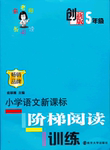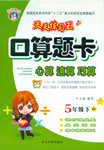题目内容
These days, “What do you want to do when you grow up?” is the wrong question to ask children in the USA. The __1__ should be: “What job are you doing now?” American companies are employing more and more young people as consultants to evaluate(评估)products for child __2__. The 12-to-19 __3__ group spends more than a $ 100 billion a year in the USA. Specialist agencies have been created to help manufacturers(生产商) ask kids about all the latest trends in clothes, food and __4__ markets. One __5__, Teenage Research Unlimited, has groups of teenagers who give their decision on products __6__ jeans. Another company, Doyle Research Associated, holds two-hour meetings in a room __7__ the “imaginarium.” Children are __8__ to play games to get __9__ a creative mood. They have to write down any ideas that __10__ into their heads.
Some manufacturers prefer to do their own __11__research. The software company Microsoft __12__a weekly “Kid’s Council” at its headquarters in Seattle, __13__ a group of school children give their decision on the __14__products and suggest new ones. One 11-years-old, Andrew Cooledge, told them that they should make more computer games which would appeal equally __15__ boys and girls. __16__ for the work are increasingly attractive. Andrew Cooledge was paid $250 and given some software. __17__, even if their ideas are valuable, the children will never make a __18__. They cannot have the copyright to their ideas. These are not jobs they can __19__for long. __20__ their mid-teens they can be told that they are too old.
1.A.sentence B.word C. answer D.question
2.A.employees B.laborers C.consumers D.employers
3.A.age B.year C.time D.generation
4.A.the other B.another C.other D.others
5.A.factory B.firm C.agent D.college
6.A.as B.like C.in D.with
7.A.called B.regarded C.intended D.said
8.A.encouraged B.discouraged C.forced D.forbidden
9.A. into B.out of C.along with D.over
10.A. happen B.come C.take D.fall
11.A.science B.clothes C.production D.market
12.A.works B.runs C.serves D.cares
13.A.there B.here C.where D.when
14.A.last B.traditional C.old D.latest
15.A.to B.for C.with D.on
16.A.Places B.Conditions C.Payments D.Advantages
17.A.Therefore B.However C. Besides D.Otherwise
18.A.life B.change C.point D.fortune
19.A.seize B.hold C.catch D.grasp
20.A.Above B.Under C.By D.Over
1-5 DCACB 6-10 BAAAB 11-15 DBCDA 16-20 CBDBC

 新课标阶梯阅读训练系列答案
新课标阶梯阅读训练系列答案 口算心算速算应用题系列答案
口算心算速算应用题系列答案第四部分:写作
第一节: ( 共10小题,每小题1分,共10分 )
读下面一篇文章,根据文中信息完成所给表格,每空不超过三个单词。
People in the United States honor their parents with two special days: Mother’s Day, on the second Sunday in May, and Father’s Day, on the third Sunday in June. These days are set aside to show love and respect for parents. They raise their children and educate them to be responsible citizens. They give love and care. These two days offer a chance to think about the changing roles of mothers and fathers. More mothers now work outside the home. More fathers must help with child-care.
These two special days are celebrated in many different ways. On Mother’s Day people wear carnations. A. red one stands for a living mother. A. white one shows that the mother is dead. Many people attend religious services(宗教仪式)to honor parents. It is also a day when people whose parents are dead visit their graves. On these days, families get together at home and in restaurants. They often have outdoor BBQs for Father’s Day. These are days of fun and good feelings and memories.
Another tradition is to give cards and gifts. Children make them in school. Many people make their own presents. These are valued more than the ones bought in stores. It is not the value of the gift that is important, but it is “the thought that counts”. Greeting card stores, florists, candy makers, bakeries, telephones companies and other stores do a lot of business during these holidays.
71.
|
Types/ categories |
●Mother’s Day ●72. |
|
73. |
to show love and respect for parents. |
|
Common points |
offer a chance to think about74. |
|
75. |
● wearing carnations on Mother’s Day. ●76. to honor parents. ●77. ●78. at home and in restaurant. ●79. |
|
80. |
Giving cards and gifts to parents. |